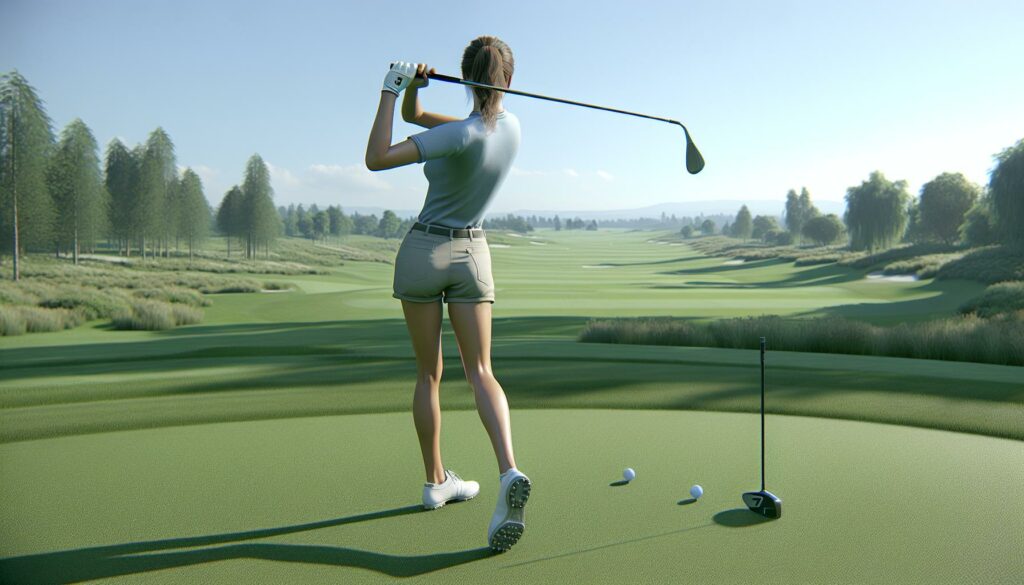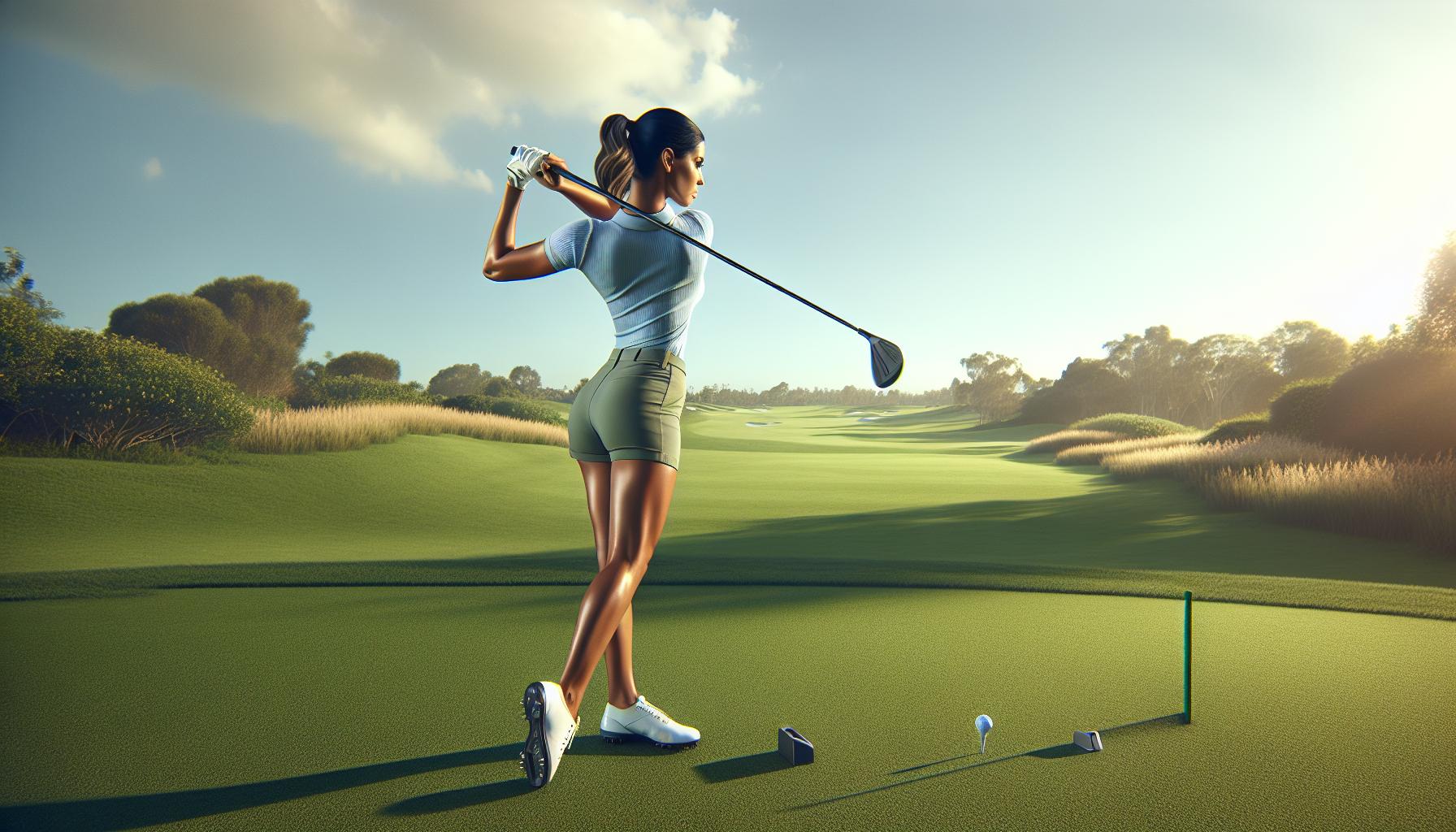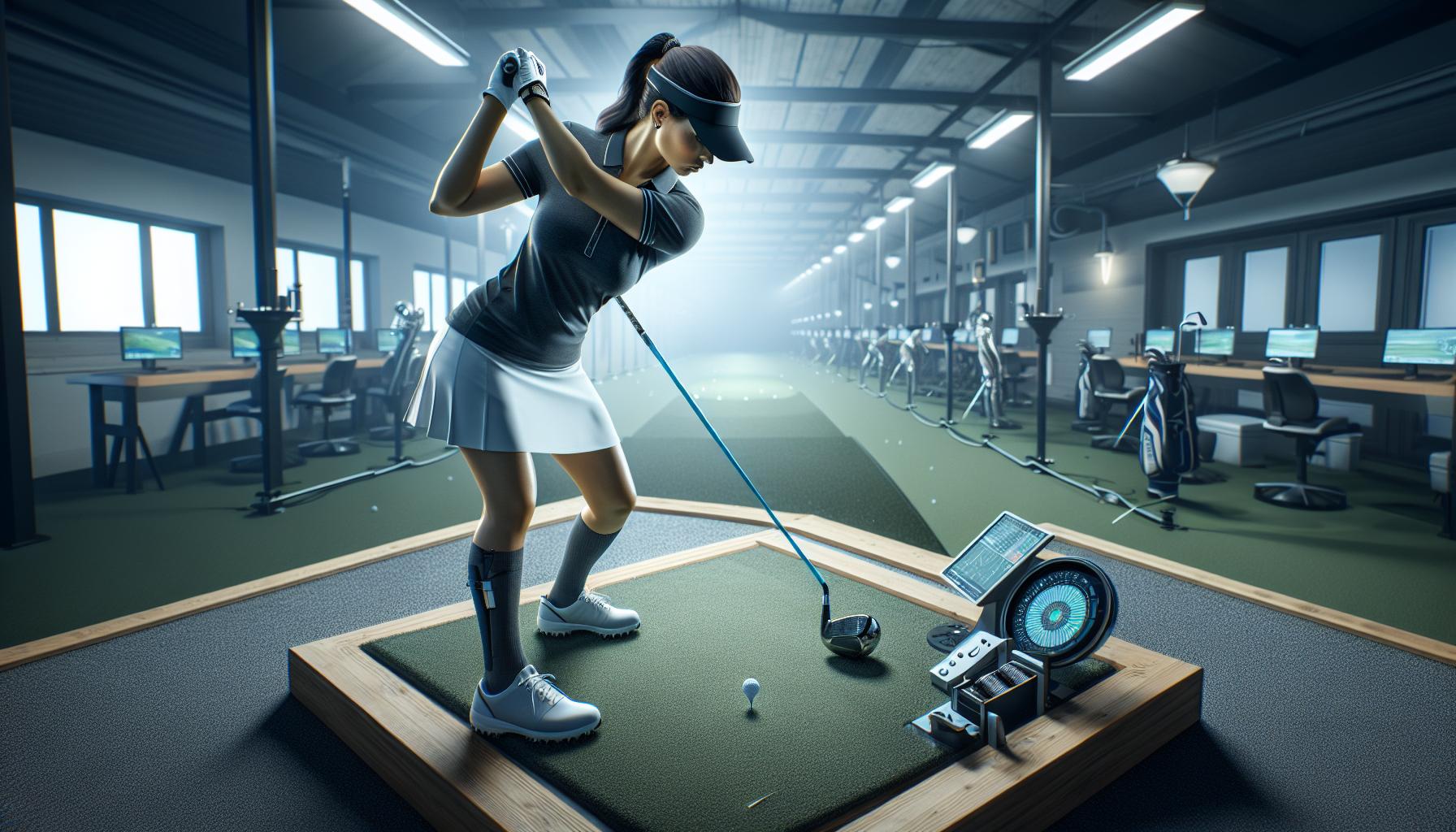Striking the perfect shot with a 7 iron hinges on mastering your launch angle. It’s a game-changer that can significantly affect distance and accuracy on the course. As a seasoned golfer, I’ve learned that understanding the nuances of launch angle is key to elevating your game.
I’ll guide you through the ins and outs of finding that sweet spot with your 7 iron. From the mechanics of the swing to the impact of clubhead speed, I’ve got the lowdown on how to optimize your launch for the best results. Whether you’re a beginner or a seasoned pro, getting the launch angle right can make all the difference.
Table of Contents
Understanding Launch Angle
When it comes to elevating my golf game, I’ve realized that grasping the concept of launch angle is paramount. Launch angle is the initial angle at which the ball leaves the clubface relative to the ground. In simpler terms, it’s the trajectory the ball takes after making contact with the club. This aspect of golf is fundamental since it can make or break your shot’s distance and accuracy.
I want to ensure that you also understand the factors affecting launch angle. One of the most critical elements is the loft of the club—a 7 iron typically has a loft between 30 to 34 degrees. However, the angle of attack, or the direction the clubhead is moving (up or down) at the moment of impact, also heavily influences launch angle. A positive angle of attack can add loft to the club, while a negative one can reduce it.
Moreover, clubhead speed plays a significant role in how far and high the ball will travel. For reference, check out the PGA Tour’s average 7 iron speed, which hovers around 90 mph, resulting in a launch angle that optimizes both carry and roll. For amateurs, the speed is usually lower, making it even more vital to optimize launch angle to compensate for the lack of speed.
Let’s dig a bit deeper. I often recommend my readers to visit authoritative sites like the PGA Tour’s official statistics to understand the benchmarks set by professionals. By comparing your own launch conditions to those, you can set realistic goals for your swing adjustments. Additionally, a session with a club fitter can help you better understand your equipmeOfTypeError’>
If we look at swing mechanics, Remember, it’s not just about hitting the ball; it’s about mastering your swing to achieve the desired outcome. Visiting a local pro or checking out online resources from trusted sites such as Golf Digest can provide guidance on improving your technique.
You may wonder about my own experience and how I’ve tackled my 7 iron shots. I’ve devoted time to practice swings, paying close attention to maintaining a consistent stance and a fluid, relaxed swing that promotes the ideal launch angle. If you’re keen to read more content like this, hop over to my equipment guide for more insights into choosing the right clubs.
The Mechanics of a 7 Iron Swing
When I swing my 7 iron, there’s a precise science behind the motion that’s often understated. The mechanics of a 7 iron swing are both complex and crucial for achieving that optimal launch angle. Clubhead path, face angle at impact, and angle of attack all come together to define the trajectory and distance of the shot.
To understand the angle of attack, think of it as the vertical direction of the clubhead’s movement at impact. A descending blow is generally recommended for irons, and for a 7 iron, this means striking the ball when the clubhead is still moving downward. The vital part of a successful 7 iron swing is the point where you transition from backswing to downswing. I make sure to initiate the downswing with my hips, allowing my arms and club to follow, which helps me maintain a consistent angle of attack.
Maintaining the proper swing plane is another critical component. I always aim to keep the clubhead traveling on a path that’s neither too steep nor too flat. This helps me hit the ball squarely with the right amount of loft. The loft is what gives the ball its initial launch angle, and getting it right is non-negotiable for that perfect shot.
Then there’s the clubface orientation. At the moment of impact, a square clubface relative to the target line will produce the straightest shots. However, if the face is open or closed, the ball will veer off to the right or left, which is something I cautiously avoid during my practice sessions.
When it comes to swing speed, I’ve learned that balance and rhythm matter more than raw power. It’s not just about how hard you hit the ball, but how effectively you can transfer energy throughout the swing. A smooth tempo ensures that I don’t lose control of my swing mechanics, especially at the crucial moment of impact.
For those looking to perfect their 7 iron swing, consulting authoritative sources such as the PGA Tour’s official statistics can be invaluable. Here, you can find insights into the average launch conditions and see where your game stands. And, if you’re like me and constantly looking to improve, checking out a professional’s swing through video analysis on sites like Golf Channel’s instructional videos can provide a solid reference point.
Factors Affecting Launch Angle
When I’m tuning my swing with a 7 iron, there’s a bundle of factors I consider to optimize launch angle. These elements are critical, and tweaking just one can mean the difference between a shot that soars and one that disappoints.
Loft is the starter. It’s a given that the loft of the club is the primary factor affecting launch angle. However, don’t overlook the dynamic loft, which is the loft presented at impact, not just the static number stamped on the club. To gain an in-depth understanding of how loft influences ball flight, I always check out reputable sources like the USGA. The relationship between loft and launch angle is intricate, and getting it right takes practice.
Then there’s the angle of attack, which is how your clubhead meets the ball. A steep angle of attack can increase the launch but might also reduce distance if not executed properly. I’ve seen players who adjust their attack angle and instantly see improvements. Analysing your swing’s angle of attack is crucial, and for that, I might use tools like video analysis software or consult with a coach.
The condition of the turf also plays a part in the launch angle. Hitting off a tight fairway lie compared to the cushion of the rough can change how the ball interacts with the clubface, and consequently, the launch angle.
Swing speed is another major factor. Although it’s more associated with distance, it also influences the ball’s launch. A faster swing speed generally translates to a higher launch, but it must be controlled to avoid losing accuracy or causing excessive spin.
It doesn’t stop there. Clubface orientation at impact – whether it’s open, closed, or square – will affect the ball’s initial direction and spin axis, which then contributes to its launch characteristics.
I often reference the insights on the PGA Tour website when I’m comparing my stats to professionals. It helps me set realistic goals and understand the nuances of pro-level swings.
In my journey to refine my 7 iron shots, I’ve found that taking a holistic approach to understanding each factor is essential. Sometimes, it’s about visiting my trusty equipment guide for the right gear or continuously browsing through forums and expert-authored articles to gather tips and tricks.
Finding Your Ideal Launch Angle
Discovering your optimal 7 iron launch angle is essential for any golfer looking to improve their game. Knowing how the ball leaves the clubface can give you a significant edge on the course. For starters, average golfers usually see their 7 iron launch at about 16 to 20 degrees, but individual swings will lead to different results. The key is to find what works best for you.
When attempting to determine your ideal launch angle, you must consider your unique swing characteristics. I’ve always found that using a launch monitor can be incredibly helpful. These devices provide instant feedback on not just launch angle but also on ball speed, spin rate, and distance. For those who want to invest in their game, I recommend looking into reputable products like TrackMan or FlightScope. You can often find these at local golf club fitting centers or retail stores.
Sometimes, seeking the expertise of a certified club fitter can make a significant difference. They’ll assess your swing and help tailor your clubs to suit your specifics, ensuring that you’re not fighting against your equipment. Professionals often stress the importance of having the right lie angle, shaft flex, and shaft length – all of which can influence the launch angle of your 7 iron shots. I always suggest scheduling a session with a local PGA Professional or visiting the PGA’s official site for further details on fitting.
But keep in mind, it’s not all about equipment. Swing mechanics are just as crucial. Working on your technique can lead to improvements in your launch angle. Don’t overlook the impact that elements like grip, stance, and posture have on your swing. I’ve noticed steady improvements in my own game since incorporating drills recommended by experts. Staying up-to-date with tips from credible sources is a practice I stick to – a quick read through the latest articles on Golf Digest can provide a wealth of knowledge.
Lastly, keeping track of your progress is vital. A digital tool or app, some of which are recommended on {site}, helps golfers analyze their swings over time. This kind of self-assessment encourages intentional practice and reinforces the muscle memory needed to maintain that ideal launch angle. Remember, achieving consistency is about dedication and practice, so don’t lose sight of the goal, and make sure to enjoy the process.
The Impact of Clubhead Speed
When diving into the intricacies of the 7 iron launch angle, we can’t overlook the profound effect of clubhead speed. As I’ve refined my own skills and researched extensively, it’s clear that greater speed at impact can significantly alter the ball’s launch conditions. For golfers on the quest for that optimal flight trajectory, understanding and improving your clubhead speed can make all the difference.
Firstly, it’s crucial to grasp that a faster clubhead speed typically generates a higher launch angle. This is because with increased velocity, the ball spends less time in contact with the clubface, leading to a reduced amount of dynamic loft transferred at the moment of impact. Consequently, if you’re aiming to enhance your 7 iron launch angle, focusing on increasing your swing speed is a smart strategy.
In addition to affecting launch angle, a swift clubhead speed also contributes to overall distance. The basic physics behind this phenomenon is something most professional golfers are well-acquainted with; it’s the principle that, all else being equal, a faster swing will impart more energy to the golf ball, sending it soaring further down the fairway. This is a great opportunity to check out the PGA Tour’s insightful article on Distance Insights, where experts delve into the impact of speed on your game.
I’ve also found that incorporating specific drills designed to boost swing speed can result in noticeable improvements. For the best results, combine these drills with strength and flexibility training—don’t underestimate the power of a well-rounded fitness regimen. For more insights into such training, Golf Digest offers an excellent resource that can be found here.
Meanwhile, using a launch monitor is one way to get immediate feedback on the changes in launch angle as you experiment with your swing speed. It’s not just about seeing those numbers increase; it’s about understanding how every mph added can affect the flight of your ball.
By continually monitoring your stats, identifying your current capabilities, and employing targeted exercises, you can effectively enhance your clubhead speed and impact your 7 iron launch angle. Remember, perseverance and smart training are your allies in this journey. As I’ve experienced firsthand, the dedication to refining your swing speed can reward you with both improved launch conditions and a more powerful golf game. And don’t forget to stay engaged with authoritative sources like {site} to ensure you’re on the right track with the most up-to-date and accurate information available.
Tips for Optimizing Launch Angle
Improving your 7 iron launch angle can seem daunting, but it’s all about tweaking your technique and equipment to find that sweet spot. First things first, grip and posture play pivotal roles. I’ve found that a neutral grip promotes a more consistent angle, while poor posture can impede your swing dynamics. Make sure you’re standing with your back straight, knees slightly bent, and feet shoulder-width apart to maintain an ideal posture throughout your swing.
Mastering the ball position is next on the list. With a 7 iron, positioning the ball just ahead of the center of your stance usually yields the best launch angle. This allows for a cleaner contact with the ball, encouraging a better flight path. Don’t forget about the importance of strike quality as well. A clean, centered strike will ensure maximum energy transfer from the club to the ball, which is essential for an elevated launch.
Moreover, my trajectory significantly improved when I started paying attention to angle of attack. For a 7 iron, a slight downward strike is beneficial. This means the club should be moving downward at the point of impact, which helps to create backspin and thus contributes to a higher launch. One way I’ve worked on this is by focusing on leading with the hands during impact, a tip I picked up from a leading golf coach on Golf Digest.
On top of technique, make sure you have the right equipment. The shaft flex and loft of your 7 iron can dramatically affect your launch angle. You might want to consider a fitting session at a reputable golf shop or with a PGA professional to ensure your clubs are tailored to your swing.
Lastly, remember to practice consistently with purpose. I’ve integrated specific drills that target launch angle into my practice routine. These drills aren’t just about hitting the ball; they’re about fine-tuning the swing elements that contribute to launch angle. To track progress, use a launch monitor which can provide instant feedback on each shot. And for a deep dive into the data behind the swing, I often refer to the insights shared right here on {site} to stay informed and make incremental improvements.
Conclusion
Mastering your 7 iron launch angle can transform your game, giving you the precision and control needed on the fairway. Remember, it’s not just about practicing; it’s about practicing with intent. Utilize the right equipment and pay attention to the nuances of your technique. Embrace the technology at your disposal—launch monitors can be game-changers in fine-tuning your skills. As you continue to work on your grip, posture, and strike, you’ll find the sweet spot that sends the ball soaring with the perfect arc. Keep striving for that ideal launch angle and watch as your golf game reaches new heights.
Frequently Asked Questions
What is launch angle in golf?
Launch angle is the angle at which a golf ball takes off from the ground relative to the horizon immediately after being struck by a club.
Why is the launch angle important for a 7 iron?
The launch angle is crucial for a 7 iron because it significantly affects the distance the ball travels and its trajectory, influencing overall shot effectiveness.
How can I improve my grip to optimize launch angle?
Improving your grip involves ensuring your hands work together cohesively, with neither hand dominating the other, to allow for a squarer clubface at impact and a better launch angle.
What role does posture play in launch angle?
Good posture aids in the proper alignment of the body, allowing you to maintain balance and control throughout the swing, which contributes to optimizing the launch angle.
Where should the ball be positioned to improve launch angle?
For a 7 iron, the ball should typically be positioned slightly forward of the center of your stance to help achieve a better launch angle.
How does the angle of attack affect the launch angle?
A steeper angle of attack tends to decrease the launch angle, while a more shallow angle can increase it, influencing how high the ball will fly.
What is the significance of the shaft flex in launch angle?
Shaft flex impacts the timing of the release of the clubhead at impact. The right flex can help optimize launch conditions, including the launch angle.
Can equipment affect my launch angle?
Yes, using the right equipment, like a 7 iron with the appropriate shaft flex and loft, can significantly impact your launch angle.
Is it helpful to use a launch monitor?
Definitely, using a launch monitor provides precise feedback on your shots, allowing you to make data-driven adjustments to improve your launch angle.
Where can I find more information on improving my launch angle?
For more detailed guidance, refer to authoritative golf instruction sources, books, or a certified golf instructor.










